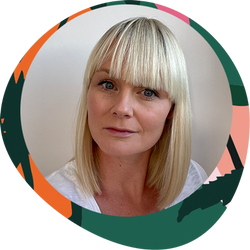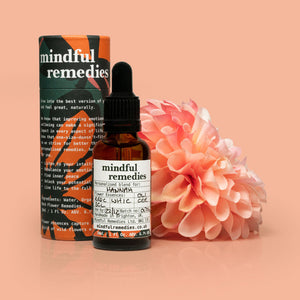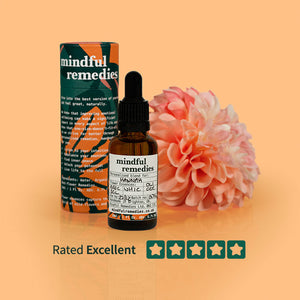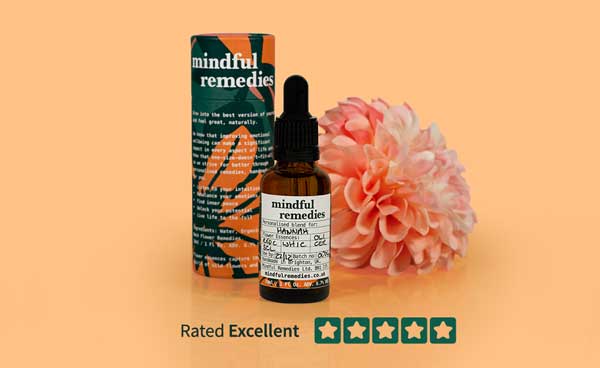your basket
- choosing a selection results in a full page refresh

Dr Bach was a British physician, bacteriologist and homeopath. He is best known for developing the Bach flower remedies. Dr Bach believed that the cause of disease was an imbalance in emotions and, as such, he developed a system of flower remedies to help restore balance to negative feelings.
Dr Bach believed that all flowers carry with them a soul or energy. Flower essences take on this energy of the source plant which make it possible to release those feelings in an individual by using the flower essence. Each individual remedy relates to a different negative emotion and the flower remedy then restores a sense of balance, re-harmonising an individual to their true self. The energies lift our vibrations and unblock channels within our minds, allowing us to approach life more positively.

Dr Edward Bach was born in 1886 in Birmingham, England and he went on to study a Diploma of Public Health at Cambridge in the early 1900s. He soon become more interested in the patients themselves, rather than their diseases. Through listening to patients, he found a correlation between some of their physical illnesses and their mental and emotional state. He started to believe that treating the physical symptoms was not sufficient and started exploring the idea that the body is a mirror reflecting the mind.
“We can judge our health by our happiness” – Edward Bach – The Original Writings
He came into contact with homeopathy and liked the concept of the patient being the most important factor and that the remedies here were prescribed for the patient’s personality as well as physical symptoms. He worked at the Royal London Homeopathic Hospital and become interested in the relationship between intestinal toxaemia and chronic disease. Within his work there he developed seven nosodes to cleanse and purify the intestinal flora – that are still being used today. As he was treating patients with these nosodes he started to notice that patients suffering from the same physical disease all had similar emotional issues and thereafter he started treating according to his patient’s temperament, personality and emotional difficulties only, removing the need for a physical exam. The results were excellent, and this confirmed his belief that physical disease is the result of mental attitude.
From here he decided to devote the rest of his life to discovering remedies that would help with emotional imbalances, so he gave up his work in London and moved to the countryside as he believed he would find the answers within nature in flowers and plants. He became very sensitive in body and mind and would feel a negative state of mind very acutely alongside physical symptoms before finding a particular flower. He would then be led to the flower which would restore his emotional balance and shortly after the physical symptom would disappear too. After 5 years he announced his work was complete and shortly afterwards died in 1936.
He found 38 flowers in total, covering all the negative emotional states of mind. He placed the individual flower essences into seven groups – for fear, for uncertainty and indecision, for loneliness, for insufficient interest in present circumstances, for over sensitiveness to ideas and influences, for despondency and despair, for the over-care for welfare of others.
Bach’s flower remedies are prepared (either boiled or left in the sun) in water and then preserved in brandy. The mother tincture is then mixed with water and brandy and the liquid is then either placed directly on the tongue or dropped into a glass of water.
You can find a full list of the Dr Bach 38 flower remedies and their emotional indications here.
Although modern society has evolved, the same emotions still stand true today.
Bach believed strongly in looking at a person as a whole, rather than as a set of symptoms. Conventional medicine treats disease as something external to the patient without asking why one person may get sick whereas another doesn’t. It’s quite one dimensional.
“The main reason for the failure of modern medical science is that it is dealing with the results and not the causes”
Bach wanted to create a system that would address every part of a person, their personality and emotions as well. Flower remedies and other non-conventional medicines are also helpful in the prevention of illness when an imbalance first arises, rather than waiting for it to become more severe.
The remedies do not treat physical illness directly but help to restore harmony and balance to the personality and mind which allows the body’s natural defences to work more effectively and help people to heal themselves. Bach observed that many people are exposed to viruses but only some get very sick – perhaps these people were out of balance emotionally, so the body’s natural defences were weakened and allowed the virus to be let in.
The remedies treat the person as a whole – healing the mental outlook or personality trait of the person, rather than the disease, however this pursuit of emotional balance should help to support physical healing.
Dr Bach stated in his publication Heal Thyself “the personality without conflict is immune from illness.” His implication here is that sickness occurs when there is a disharmony between the personality and the soul, therefore, to recover, one must realign these two aspects, so they are in sync with one another. Through achieving harmony and balance between the soul and personality, this allows the body’s natural defences to work more effectively and help people to heal themselves physically.
If a patient was to focus solely on repairing the body, this would only be superficial and the disease may rear its head again, either in the same form or in the shape of a different illness. The relief would only be temporary until the underlying cause is addressed. While the soul and personality continue to be in disharmony, the patient would continue to be susceptible to illness.
Healing can be assisted through seeking calmness – mental and physical relaxation and supporting the mind to become calm. Dr Bach was a strong advocate of meditation to support healing through achieving calm thought. This in turn can bring peace so our souls can speak to us through our conscience and intuition and guide us according to their wish. Through meditation, we will achieve guidance and answers to the problems of life so we can move forward with confidence. Mental strength can be achieved through setting aside time each day to practice meditation so that our minds can stay strong and calm and not allow deviation from the soul, no matter what issues life might throw at us.
Whilst it is better to prevent oneself from getting sick in the first place by keeping the personality in harmony with the soul, once sick the best way to help recover is to seek realignment of the mind, body and soul as soon as possible and address any underlying emotional conflicts. Only then can the body truly heal.
Bach also believed in the simplicity of the system and that people should be able to use the system themselves. He wanted the system to be straightforward enough for everyone to use at home, with only an understanding of human nature and sympathy. He condensed all his work into a 32 page booklet called The Twelve Healers as he wanted to make the Bach flower remedy system as simple as possible to understand and use.
“I want to make it as simple as this: ‘I am hungry, I will go and pull a lettuce from the garden for my tea; I am frightened and ill, I will take a dose of Mimulus.’” Quoted by Nora Weeks, The Medical Discoveries of Edwards Bach, Physician.
Ultimately, the patient must take responsibility for their own healing. The role of myself as a practitioner therefore is to educate people on the remedies and how to use them, ideally moving to a role whereby they have sufficient knowledge to continue their healing journey themselves. I am just there to support and facilitate their journey.
So, there you have it. The life and principles of Dr Bach in a nutshell. His focus on the simplicity of flower remedies system and treating people as a whole rather than just looking at their outward symptoms is something we can all learn from today. If this has piqued your interest, then find out more about the individual flower essences, read their specific descriptions and create your own personalised treatment bottle, choosing up to seven essences in total, at the link below.
view all 38 flower essences
Since 2021, Lucy Edwards, a qualified Bach Flower Practitioner and the driving force behind Mindful Remedies, has connected with clients across the world. Crafting thousands of personalised remedies, Lucy has supported individuals' emotional wellbeing, shipping remedies to far-flung places like the USA, Thailand, and Australia.
Lucy is readily available for conversations, offering personalised advice to guide you on the path to holistic wellness. It's important to note that she's not only qualified but also registered with the Bach Centre, ensuring that every consultation and remedy adheres to Dr Bach’s original guidelines for expert care and efficacy.



